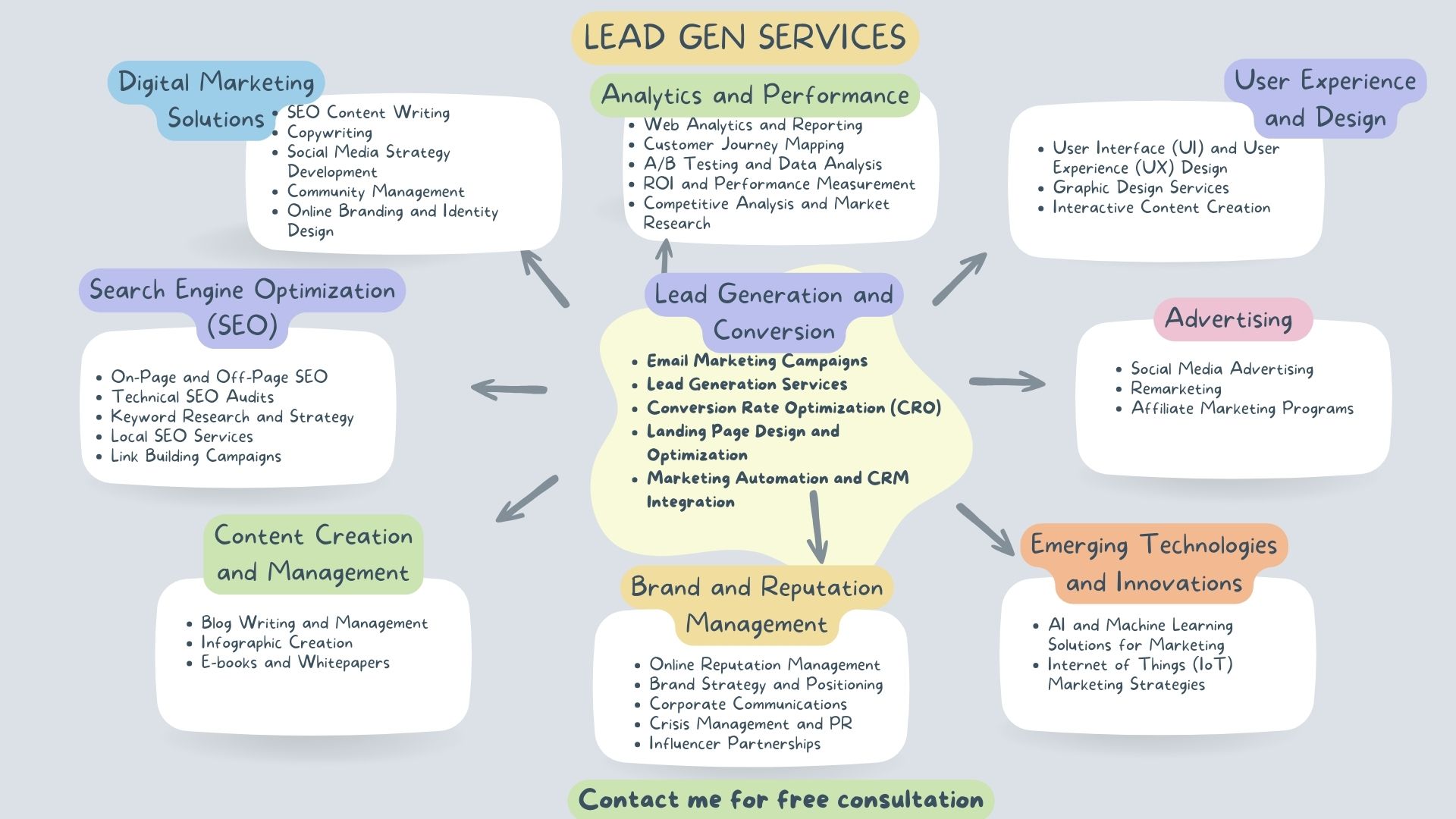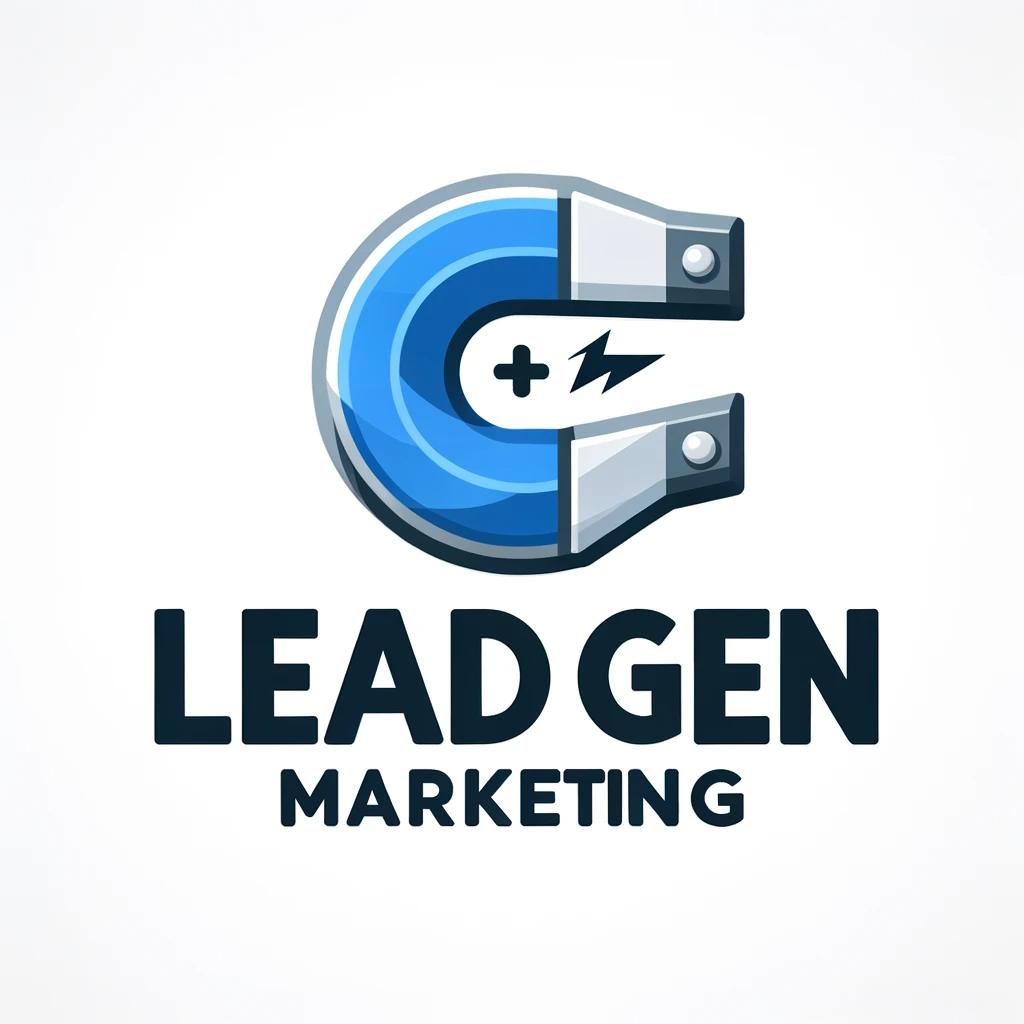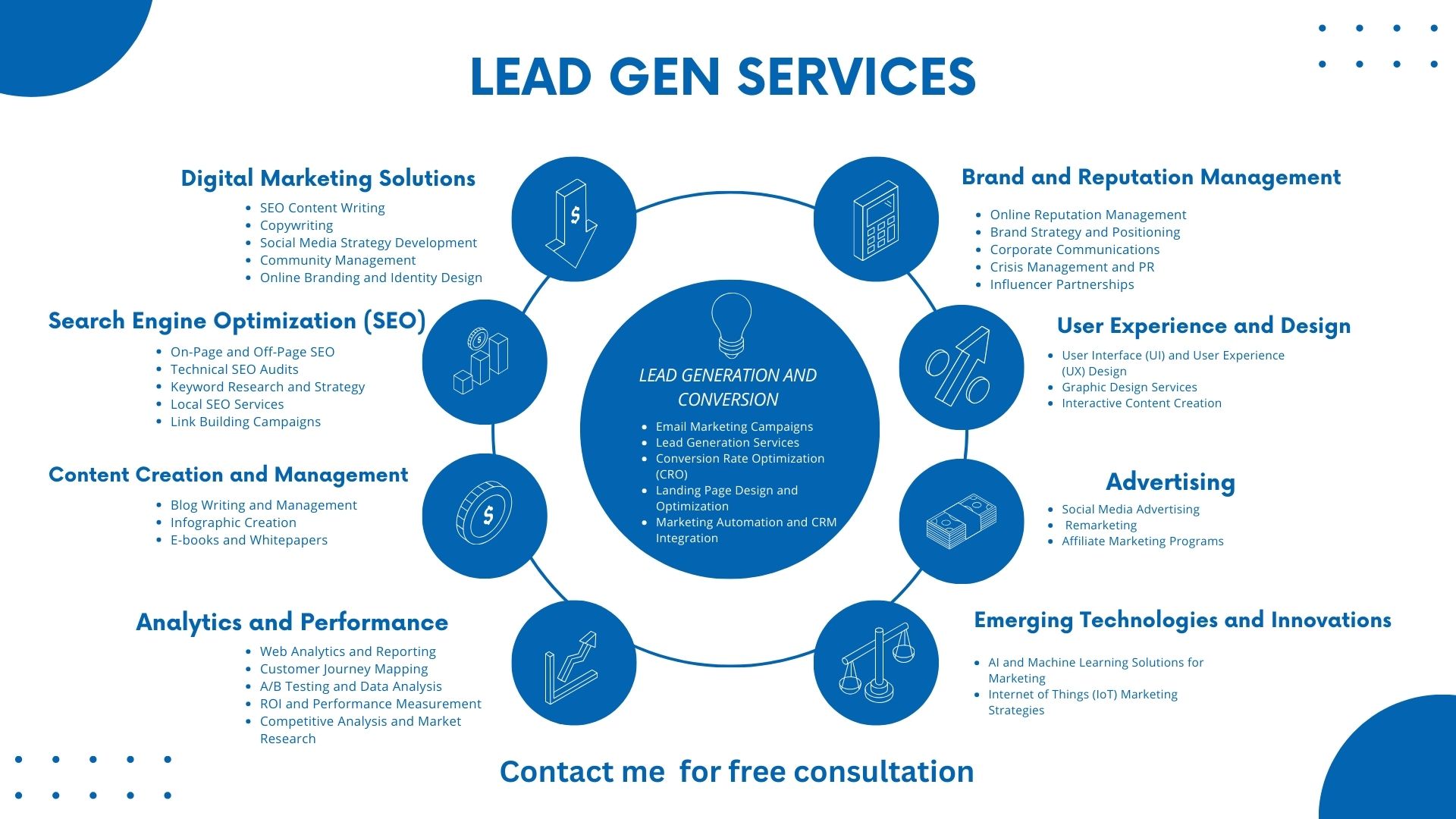In today’s digital age, the power of data cannot be underestimated. It has transformed various industries, and sales is no exception. Data-driven leads have emerged as a powerful tool that can revolutionize the sales process and generate valuable insights for businesses. By leveraging data analytics and implementing data-driven strategies, companies can optimize their lead-generation efforts, target their audience more effectively, and enhance the customer experience.
In this article, we will explore the potential of data-driven leads, their relevance in today’s market, the core elements of data-driven lead generation, the critical role of clean, structured data, the technology stack behind it, resonating with the target audience, prioritizing an inclusive user experience, measuring the effectiveness of data-driven strategies, and the future of sales with data-driven leads.
The Power of Data in Lead Generation

Data is a powerful tool in lead generation and prospecting, enabling businesses to identify potential customers, target their needs, and tailor marketing efforts accordingly.
Businesses can gain valuable insights into customer behavior, preferences, and pain points by leveraging data analytics. This information can be used to refine lead generation strategies for B2B, optimize marketing campaigns, and generate leads that are more likely to be converted.
Data-driven leads provide valuable insights throughout the lead generation process, from identifying potential customers to nurturing and converting leads.
One of the primary advantages of data-driven leads is their ability to understand customer needs better. By analyzing data, businesses can gain a deep understanding of their target audience, including their job title, industry trends, and demographic information. This information allows businesses to tailor their marketing efforts to the specific needs of their target market, ensuring that their campaigns resonate with potential customers.
Another key benefit of data-driven leads is their ability to optimize the lead-generation process. By analyzing data, businesses can identify the pain points of their target audience and tailor their marketing strategy accordingly. This ensures that leads are generated in a way that addresses the specific needs of potential customers, increasing the chances of conversion.
Moreover, data analytics enables businesses to track and analyze the performance of CPA lead generation campaigns, allowing for continuous improvement and refinement of strategies.
The Relevance of Data-Driven Approach in Today’s Market

In today’s market, where competition is fierce and customer expectations are high, a data-driven approach is crucial for staying ahead of the curve. By analyzing data, businesses can gain insights into industry trends, customer preferences, and market demands, allowing them to align their marketing strategy accordingly. This data-driven approach ensures that businesses are proactive in meeting customer needs and can anticipate future trends, enabling them to stay relevant in a rapidly evolving market.
Moreover, data-driven leads play a vital role in enhancing brand awareness and the customer experience. By analyzing data, businesses can personalize their marketing efforts and tailor them to the specific needs of their target audience. This level of personalization not only enhances brand perception but also creates a more engaging and meaningful customer experience. It allows businesses to deliver content, products, and services that are relevant to their customers, resulting in higher customer satisfaction and loyalty.
Furthermore, data-driven leads maximize conversion rate optimization by ensuring marketing campaigns target qualified leads. By analyzing data, businesses can identify leads that have a higher potential for conversion and focus their efforts on nurturing these leads. This targeted approach improves the efficiency of AI for lead generation campaigns, resulting in higher conversion rates and a more effective use of resources.
The data-driven approach also enables businesses to generate leads based on specific needs, which is becoming increasingly important in today’s market. By analyzing data, businesses can understand the pain points of their target audience and develop lead engagement campaigns that address these pain points. This ensures that the leads generated are of high quality, as they are more likely to be interested in the solutions offered by the business.
Core Elements of Data-Driven Lead Generation
To harness the power of data-driven leads, businesses need to focus on key elements that drive effective lead generation. These core elements include defining the ideal audience through customer profiling, categorizing leads for effective management, and utilizing web forms for data capture. By implementing these strategies, businesses can optimize their lead generation efforts and generate qualified leads with a higher conversion potential.
Defining Your Ideal Audience through Customer Profiling

Defining the ideal audience is the first step in generating leads effectively. By creating customer profiles and buyer personas, businesses can gain a deeper understanding of their target audience, including their needs, preferences, and pain points. This information allows businesses to tailor their marketing efforts to specific customer segments, increasing the effectiveness of lead generation campaigns.
Customer profiling involves gathering demographic information, job titles, industry trends, and other relevant data points. This data helps businesses identify patterns and trends, enabling them to target their marketing efforts more effectively. By understanding the specific needs and pain points of different customer segments, businesses can create marketing campaigns that address these needs, resulting in higher-quality leads.
Moreover, customer profiling helps businesses personalize their marketing efforts, making them more relevant and engaging for potential customers. By tailoring content, offers, and messages to specific customer segments, businesses can drive higher engagement and conversion rates. This level of personalization creates a customer-centric approach, fostering a stronger connection between the business and its target audience.
In addition, customer profiling allows businesses to identify industry trends and align their marketing efforts accordingly. By analyzing data, companies can gain insights into market demands, customer preferences, and emerging trends. This information enables businesses to develop strategies that resonate with the target market, ensuring their lead-generation efforts align with industry trends and customer expectations.
Overall, customer profiling is a critical element of data-driven lead generation, as it enables businesses to target their audience more effectively and create marketing campaigns that address specific customer needs. By leveraging data, companies can optimize their marketing efforts, generate qualified leads, and drive higher conversion rates.
Importance of Categorizing Leads for Effective Management

Categorizing leads is essential for effective lead management and nurturing. By categorizing leads based on their level of qualification, businesses can prioritize their efforts and allocate resources more efficiently. This process, known as lead scoring, allows businesses to focus on leads with a higher potential for conversion, increasing the effectiveness of lead-generation campaigns.
Lead scoring involves assigning a score to each lead based on specific criteria, such as demographic information, engagement level, and pain points. By analyzing the data, businesses can determine the criteria indicating higher conversion potential and assign scores accordingly. This enables enterprises to prioritize leads and focus their efforts on leads that are more likely to become customers, optimizing the use of resources.
Furthermore, lead scoring helps businesses manage their sales funnel effectively. By categorizing leads based on their level of qualification, companies can track leads throughout the sales cycle and identify potential bottlenecks or pain points. This information allows businesses to refine their sales process, address customer needs more effectively, and nurture leads toward conversion.
Proper lead categorization also facilitates targeted content marketing strategies. By analyzing data, businesses can determine the pain points and interests of specific customer segments, allowing them to create content that addresses these needs. This targeted approach enhances lead generation efforts, as potential customers are more likely to engage with content that resonates with their needs.
In summary, lead categorization is a critical element of data-driven lead generation, enabling businesses to prioritize leads, manage their sales funnel effectively, and target their marketing efforts more efficiently. By leveraging data, businesses can optimize their lead-generation campaigns, generate qualified leads, and drive higher conversion rates.
The Role of Web Forms in Data Capture

Web forms play a crucial role in data capture for lead generation efforts. Businesses can collect valuable information from potential customers, including web forms on landing pages, websites, and other digital platforms, such as email addresses and demographic data. This data is the foundation for data-driven lead generation and enables businesses to nurture leads effectively. They need to consider website bot detection tools to get accurate data
Web forms provide businesses with a means of capturing customer data, essential for lead-generation campaigns. By collecting email addresses, companies can establish direct communication channels with potential customers, enabling them to follow up on leads and nurture them toward conversion. This direct communication increases the likelihood of engagement and conversion, as businesses can tailor their messaging to specific leads.
Moreover, data captured through web forms fuels future marketing efforts. Businesses can refine their customer profiles and target their marketing efforts more effectively by collecting demographic information, job titles, and other relevant data points. This information allows businesses to create content, offers, and campaigns that resonate with specific customer segments, optimizing lead generation efforts and driving higher conversion rates.
Effective landing pages are critical for valuable data capture and lead generation. By optimizing landing pages, businesses can increase the likelihood of potential customers submitting web forms and providing helpful information. A well-designed landing page and an enticing offer or call-to-action encourage visitors to share their contact information, generating leads and fueling the data-driven lead-generation process.
In conclusion, web forms and data capture are integral to data-driven lead generation. They allow businesses to gather valuable customer data, establish direct communication channels, and tailor their marketing efforts to specific customer segments. By leveraging data captured through web forms, businesses can optimize their lead generation campaigns, nurture leads more effectively, and drive higher conversion rates.
The Critical Role of Clean, Structured Data

Clean, structured data is the backbone of data-driven lead generation. Without accurate data, businesses cannot effectively target their audience, personalize their marketing efforts, or make informed decisions. Clean data ensures that companies are working with accurate information, enabling them to generate leads of higher quality and increase the chances of conversion. Structured data, on the other hand, allows businesses to organize and analyze information effectively, gaining valuable insights that drive lead-generation strategies.
The Impact of Unstructured Data on Lead Generation

Unstructured data can have a significant impact on lead-generation efforts. Unstructured data can lead to inaccuracies, inefficiencies, and missed opportunities without proper organization and cleaning. Unstructured data refers to information that is not organized or labeled in a way that allows for easy analysis and utilization.
The impact of unstructured data on lead generation strategies is twofold. On one hand, unstructured data can lead to inaccuracies and inconsistencies, which can hinder lead generation efforts. For example, incorrect or outdated contact information can result in wasted resources as businesses try to reach out to no longer valid leads. Similarly, inconsistent data formats can make it challenging to analyze and utilize the data effectively, limiting the insights gained from lead generation campaigns.
On the other hand, unstructured data can also lead to missed opportunities. Without clean, organized data, businesses may struggle to identify trends, patterns, and valuable insights. This hinders their ability to optimize lead generation strategies, target the right audience, and tailor marketing campaigns effectively. Unstructured data can also lead to a lack of visibility into the performance of marketing campaigns, making it difficult to track progress and make data-driven decisions.
In contrast, clean, structured data is critical for accurate lead-generation strategies and successful marketing campaigns. By organizing and cleaning data, businesses can ensure the accuracy and consistency of information, enabling them to target the right audience, personalize marketing efforts, and make informed decisions. Clean data also allows for more effective analysis, providing valuable insights that drive lead generation strategies and maximize conversion rates.
Techniques to Maintain Data Hygiene

Maintaining data hygiene is essential for effective lead-generation campaigns. Data hygiene refers to the practices and processes that ensure data accuracy, consistency, and integrity. By implementing data hygiene techniques, businesses can enhance the quality of their data, optimize lead generation efforts, and fuel data-driven marketing campaigns.
One technique to maintain data hygiene is regularly cleaning and updating data. This involves reviewing and validating data, removing duplicate or outdated information, and ensuring data consistency and accuracy. By keeping data clean, businesses can avoid errors, inaccuracies, and wasted resources, ensuring that lead generation efforts are effective and efficient.
Data analytics and tools like Google Analytics are critical to maintaining data hygiene. By analyzing data, businesses can identify and rectify data quality issues, such as missing information or inconsistent data formats. These insights provide valuable information for data cleansing, improving data integrity, and optimizing lead generation campaigns.
In addition, implementing the best data collection, storage, and security practices is essential for data hygiene. This includes obtaining explicit consent from individuals before collecting their data, securely storing data to protect privacy, and complying with data protection regulations. Following best practices ensures data is collected and used ethically, enhancing customer trust and confidence in lead-generation efforts.
Regular data hygiene audits and checks are crucial to maintaining data accuracy and integrity. By conducting regular data reviews, businesses can identify and rectify data quality issues, ensure data consistency, and optimize lead techniques based on accurate information. This ongoing data hygiene process ensures that lead generation efforts are continually refined and optimized, maximizing the effectiveness of marketing campaigns.
Technology Stack: The Backbone of Data-Driven Lead Generation
Technology plays a critical role in data-driven lead generation. A robust and well-integrated technology stack provides businesses with the tools and capabilities to collect, analyze, and utilize data effectively. From marketing automation platforms to machine learning algorithms, the technology stack forms the backbone of data-driven lead generation, enabling businesses to generate qualified leads, optimize marketing efforts, and drive higher conversion rates.
Evaluating the Right Tech Stack for Your Business

Choosing the right tech stack is critical for effective data-driven lead generation. The tech stack refers to the collection of marketing automation platforms, software, and tools businesses use to manage their lead-generation efforts.
Businesses should consider their specific needs, target audience, and future campaigns when evaluating the right tech stack. It is essential to select marketing automation platforms that align with lead generation strategies, enabling businesses to collect, analyze, and utilize data effectively. These platforms should provide robust data analytics capabilities, allowing businesses to gain valuable insights, optimize marketing efforts, and drive higher conversion rates.
In addition, machine-learning algorithms can significantly enhance data-driven lead generation. Machine learning algorithms can analyze large volumes of data, identify patterns, and make data-driven predictions. By leveraging machine learning, businesses can automate lead scoring, personalize marketing campaigns, and optimize customer journey mapping, resulting in higher efficiency and better lead generation outcomes.
When evaluating the right tech stack, it is also important to consider integration capabilities and compatibility with existing systems. The tech stack should seamlessly integrate with other business tools and platforms, ensuring data consistency and efficient workflows. Compatibility with existing systems allows for a more holistic view of data, enabling businesses to extract maximum value from their technology investments.
Businesses can build a solid foundation for data-driven lead generation by evaluating and selecting the right tech stack. The right combination of marketing automation platforms and machine learning capabilities enables businesses to collect, analyze, and utilize data effectively, driving higher conversion rates and maximizing the impact of lead generation efforts.
How Tech Stack Supports Data-Driven Marketing and Sales

The tech stack is critical to supporting data-driven marketing and sales efforts. Marketing automation platforms, in particular, enable businesses to collect, analyze, and utilize data effectively, maximizing the impact of lead generation campaigns and optimizing the sales cycle.
Marketing automation platforms provide businesses with the tools and capabilities to capture and manage customer data, automate lead nurturing, and track campaign performance. These platforms enable businesses to collect valuable data, such as demographic information, engagement metrics, and lead scoring data. By analyzing this data, businesses can gain insights into customer behavior, preferences, and pain points, enabling them to create marketing campaigns that resonate with their target audience.
Furthermore, the tech stack supports data-driven sales efforts by providing valuable insights throughout the sales cycle. By integrating marketing automation platforms with customer relationship management (CRM) systems, businesses can track lead activity, monitor sales pipelines, and analyze conversion rates. This integration enables businesses to identify potential bottlenecks, optimize sales processes, and make data-driven decisions, ultimately driving higher sales growth.
Resonating with Your Target Audience: The Key to Successful Lead Generation
Resonating with the target audience is essential for successful lead generation. By understanding customer needs, pain points, and preferences, businesses can create marketing campaigns that capture the attention of potential customers, engage them, and drive conversions. This requires a customer-centric approach, tailored content marketing strategies, and effective call-to-action (CTA) implementations.
The Role of Content Marketing in Lead Generation

Content marketing plays a crucial role in lead-generation efforts. By creating and sharing valuable, informative, and relevant content, businesses can attract potential customers, position themselves as industry leaders, and generate leads of higher conversion potential.
One of the main benefits of content marketing is its ability to provide valuable insights to potential customers. By creating blog posts, case studies, whitepapers, and other content pieces, businesses can offer helpful information, best practices, and insights that address the pain points of their target audience. This content acts as a magnet, attracting potential customers seeking solutions to their specific needs and generating leads that are more likely to be converted.
Moreover, content marketing allows businesses to establish thought leadership and build brand awareness. By consistently creating high-quality content, companies can position themselves as experts in their industry, gaining the trust and respect of potential customers. This thought leadership enhances brand perception, making businesses the go-to source of information and solutions, which, in turn, drives lead-generation efforts.
In addition, content marketing enables businesses to engage potential customers and nurture leads towards conversion. By providing valuable content, companies can create meaningful interactions, encourage engagement, and build relationships with potential customers. This engagement helps businesses stay top-of-mind, ensuring that when potential customers are ready to purchase, they turn to the business that has provided valuable insights and information throughout their customer journey.
In summary, content marketing is a powerful tool in lead generation efforts. By creating valuable, informative, and relevant content, businesses can attract potential customers, position themselves as industry leaders, and engage leads throughout the customer journey, driving higher conversion rates.
Creating an Effective Call to Action (CTA)

Creating an effective call-to-action (CTA) is crucial for lead conversion in marketing campaigns. A well-crafted CTA prompts potential customers to take the desired action, such as signing up for a newsletter, downloading a whitepaper, or purchasing. By optimizing CTAs, businesses can maximize their conversion rate and drive leads toward conversion.
A compelling CTA should be:
- Clear and concise, specifying the desired action and the benefits of taking that action.
- Engaging, using persuasive language that resonates with the target audience.
- Visible, standing out from the rest of the content and drawing attention.
- Placed strategically, appearing at a natural stopping point in the customer journey, such as at the end of a blog post or landing page.
- Additionally, effective landing pages play a critical role in supporting the CTA and driving lead conversions. Landing pages should be designed with a singular focus, highlighting the offer’s benefits and guiding potential customers toward the CTA. The landing page experience should be seamless, intuitive, and personalized, ensuring a positive user experience and increasing the chances of conversion.
- Businesses can maximize lead conversion rates by creating compelling CTAs and optimizing landing pages, driving higher customer acquisition and revenue generation.
Prioritizing an Inclusive User Experience in Lead Generation

Prioritizing an inclusive user experience is essential for successful lead generation. By focusing on customer needs, preferences, and pain points, businesses can optimize the user experience, enhance the customer journey, and increase conversion rates.
The Impact of User Experience on Lead Conversion
The user experience plays a critical role in lead conversion. A seamless and enjoyable user experience enhances customer satisfaction, increases engagement, and drives higher conversion rates. By focusing on the user experience, businesses can create a positive customer journey, optimize lead generation strategies, and maximize conversion potential.
A good user experience addresses potential customers’ specific needs and pain points, ensuring that their journey is smooth, intuitive, and personalized. This involves understanding customer preferences, desires, and challenges and tailoring the user experience to address these needs. A customer-centric approach helps businesses build trust, establish rapport, and create meaningful connections with potential customers, increasing the chances of conversion.
Optimizing the user experience across various touchpoints and platforms is essential for lead conversion. Whether it’s a website, landing page, social media platform, or email marketing campaign, each touchpoint should be designed with the user in mind, providing a seamless experience from start to finish. Consistency and coherence across touchpoints ensure potential customers have a cohesive and positive experience, enhancing brand perception, customer satisfaction, and conversion rates.
In summary, the user experience is critical for lead conversion. By prioritizing an inclusive user experience, businesses can create a positive customer journey, tailor marketing efforts to specific needs, and increase the chances of conversion. A seamless, intuitive, personalized user experience enhances engagement, builds trust, and fosters customer loyalty, driving higher conversion rates and revenue generation.
Strategies for Enhancing User Experience
Enhancing the user experience is a key focus area for businesses looking to optimize lead-generation efforts. By implementing strategies that prioritize user experience, businesses can create engaging, personalized, and seamless customer journeys, increasing the likelihood of conversion. Some strategies for enhancing the user experience include:
- Conducting user research to gain insights into customer needs, pain points, and preferences.
- Developing buyer personas that capture customer profiles, enabling businesses to tailor the experience to specific customer segments.
- Designing intuitive, visually appealing, and responsive websites and landing pages that provide a positive first impression.
- Personalizing content and offers based on customer data, ensuring that potential customers receive information that is relevant to their needs.
- Optimizing load times and minimizing friction points, such as complex forms, to ensure a seamless, enjoyable, and frustration-free experience.
- By implementing these strategies, businesses can optimize the user experience, increase customer satisfaction, and drive higher conversion rates.
Measuring the Effectiveness of Your Data-Driven Strategy

Measuring the effectiveness of a data-driven strategy is crucial for evaluating the performance of lead-generation campaigns, making data-driven decisions, and driving future growth.
Key Metrics for Assessing Lead Generation Success
Assessing lead generation success relies on key metrics that provide insights into campaign performance, conversion rates, and the overall impact on sales efforts. These key metrics help businesses evaluate the effectiveness of lead-generation strategies, make data-driven decisions, and optimize future campaigns. Some key metrics for assessing lead generation success include:
- Conversion rate: The percentage of leads that convert into customers is a critical metric for evaluating lead generation campaign performance. A higher conversion rate indicates that lead generation efforts are effective in generating qualified leads that are more likely to convert.
- Campaign performance: Tracking the performance of lead generation campaigns, such as click-through rates, engagement metrics, and lead acquisition costs, provides insights into the overall success of marketing efforts.
- Sales team feedback: Gathering feedback from the sales team, such as lead quality, customer conversion, and customer feedback, provides valuable insights into lead generation performance and areas for improvement.
- Return on investment (ROI): Assessing the ROI of lead generation efforts, including the cost per lead and revenue generated, helps determine the efficacy of marketing campaigns and the impact on the overall sales funnel.
By analyzing these key metrics, businesses can comprehensively understand lead generation performance, make data-driven decisions, and optimize future campaigns for maximum impact.
The Role of Analytics in Driving Growth
Analytics plays a critical role in driving growth through data-driven lead-generation efforts. Businesses can gain insights into customer behavior, industry trends, and marketing campaign performance by analyzing data, enabling them to make data-driven decisions, enhance brand awareness, and drive sales growth.
One of the essential analytics tools for lead generation is Google Analytics, which provides valuable insights into website traffic generation, customer behavior, and conversion rates. By analyzing data collected through Google Analytics, businesses can identify trends, track customer engagement, and optimize marketing efforts, resulting in higher lead generation effectiveness.
Data analytics, more broadly, allows businesses to dive deeper into customer data, sales data, and marketing campaign performance, providing valuable insights that guide lead-generation strategies. By analyzing data, companies can identify opportunities, uncover pain points, and fine-tune marketing efforts to drive sales growth.
In addition, analytics helps businesses understand brand awareness, customer engagement, and customer satisfaction levels, providing a holistic view of lead generation performance. By tracking analytics, businesses can focus on lead generation efforts with high conversion potential, optimize marketing campaigns, and enhance customer experience, ultimately driving sales growth and revenue generation.
By leveraging analytics, businesses can make data-driven decisions, optimize lead-generation efforts, and drive growth. Whether through Google Analytics or other data analytics platforms, analytics provides valuable insights that guide lead generation strategies, maximize conversion rates, and ensure long-term success.
Are You Ready to Transform Your Sales Funnel with Data-Driven Leads?

Implementing data-driven leads can transform the sales funnel, optimize lead-generation efforts, and enhance the sales process. By leveraging the power of data, businesses can attract, nurture, and convert leads more effectively, driving sales growth and revenue generation.
Data-driven leads enable businesses to target potential customers more effectively and personalize marketing efforts according to their needs. This precise targeting and personalization help attract leads more likely to convert, maximizing lead generation effectiveness and optimizing the sales funnel.
Moreover, data-driven leads transform sales by providing valuable insights into customer behavior, preferences, and pain points. Sales teams can leverage this data to tailor their approach, address customer needs more effectively, and seamlessly guide potential customers through the sales cycle.
By implementing data-driven leads, businesses can undergo a transformation that aligns marketing efforts with industry trends, enhances the customer experience, and optimizes lead generation strategies. This transformation ensures that sales funnel strategies are data-driven, customer-centric, and focused on generating leads of higher conversion potential.
Conclusion
In conclusion, data-driven leads are the future of sales. By harnessing the power of data, businesses can gain valuable insights into their target audience and effectively generate high-quality leads. The relevance of a data-driven approach in today’s market cannot be underestimated. It allows businesses to personalize their marketing efforts, improve lead management, and enhance the user experience.
Defining your ideal audience through customer profiling is crucial to successfully implementing a data-driven lead generation strategy. Equally important is categorizing leads for effective management and utilizing web forms for data capture. Maintaining clean and structured data is also essential for accurate analysis and decision-making.
Technology is vital in data-driven lead generation, with the right tech stack supporting marketing and sales efforts. Content marketing and compelling calls to action are key elements in resonating with your target audience and driving lead generation.
Measuring the effectiveness of your data-driven strategy is crucial. By tracking key metrics and leveraging analytics, businesses can assess lead generation success and make data-backed decisions for growth.
Are you ready to transform your sales funnel with data-driven leads? Embrace the power of data to unlock new opportunities for your business. Contact us today to start working together and take your sales strategy to the next level!



No responses yet